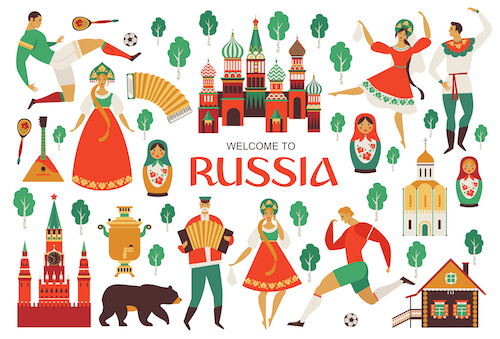Hello ladies and gents this is the Viking telling you that today we are talking about
RUSSIA
As the world’s largest country, Russia occupies one-tenth of all the land on Earth. It spans 11 time zones across two continents (Europe and Asia) and has shores on three oceans (the Atlantic, Pacific and Arctic Ocean).
The Russian landscape varies from sandy and frozen deserts, tall mountains to giant marshes. Much of Russia is made up of rolling, treeless plains called “steppes”. The region of Siberia, which occupies three-quarters of Russia, is dominated by sprawling pine forests called “taigas”.
The Russian landscape varies from desert to frozen coastline, tall mountains to giant marshes
Russia has around 100,000 rivers, including some of the longest and most powerful in the world. It also has many lakes, including Ladoga and Onega (Europe’s two largest lakes), and Lake Baikal, which contains more water than any other lake on Earth.
As Russia is so huge, it’s no surprise that this incredible country is home to a large number of ecosystems and different species. Its forests, steppes and tundras provide habitat for many rare animals, including Asiatic black bears, snow leopards, polar bears, and small, rabbit-like mammals called pikas.
Russia’s first national parks were set up in the 19th century, but decades of unregulated pollution have taken a toll on many of the country’s wild places. To help protect and restore the country’s natural beauty, strict nature reserves have been established, known as zapovedniks.
Russia’s most famous animal species is the Siberian tiger, the largest cat in the world. Indigenous to the forests of eastern Russia, these endangered giants can grow to over 3m long, and weigh up to 300kg. How’s that for a big cat?!
The earliest human settlements in Russia arose around A.D. 500, as Scandinavians moved south to areas around the upper Volga River. These settlers mixed with Slavs from the west and built a fortress that would eventually become the Ukrainian city of Kiev.
Kiev evolved into an empire that ruled most of European Russia for 200 years, then broke up into Ukraine, Belarus and Muscovy. Muscovy’s capital, Moscow, remained a small trading post until the 13th century, when Mongol invasions in the south drove people to settle in Moscow.
In the 1550s, Muscovite ruler Ivan IV became Russia’s first tsar after driving the Mongols out of Kiev and unifying the region. In 1682, Peter the Great became tsar at the age of just ten, and for 42 years he worked to make Russia more modern and more European.
I hope you liked this post and as always have a chilled day from the Viking

Comments
Post a Comment